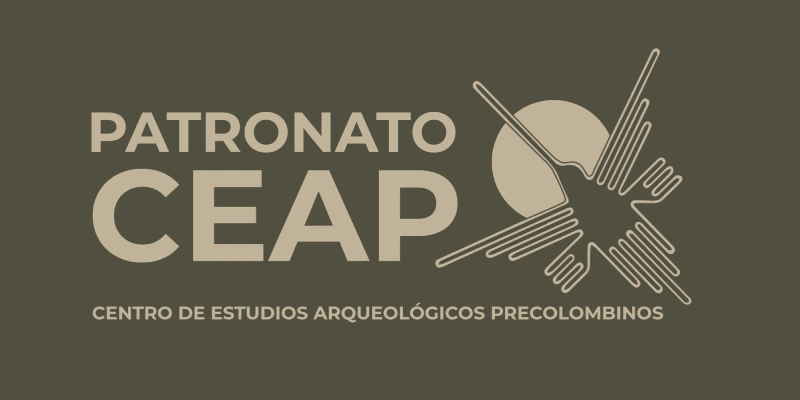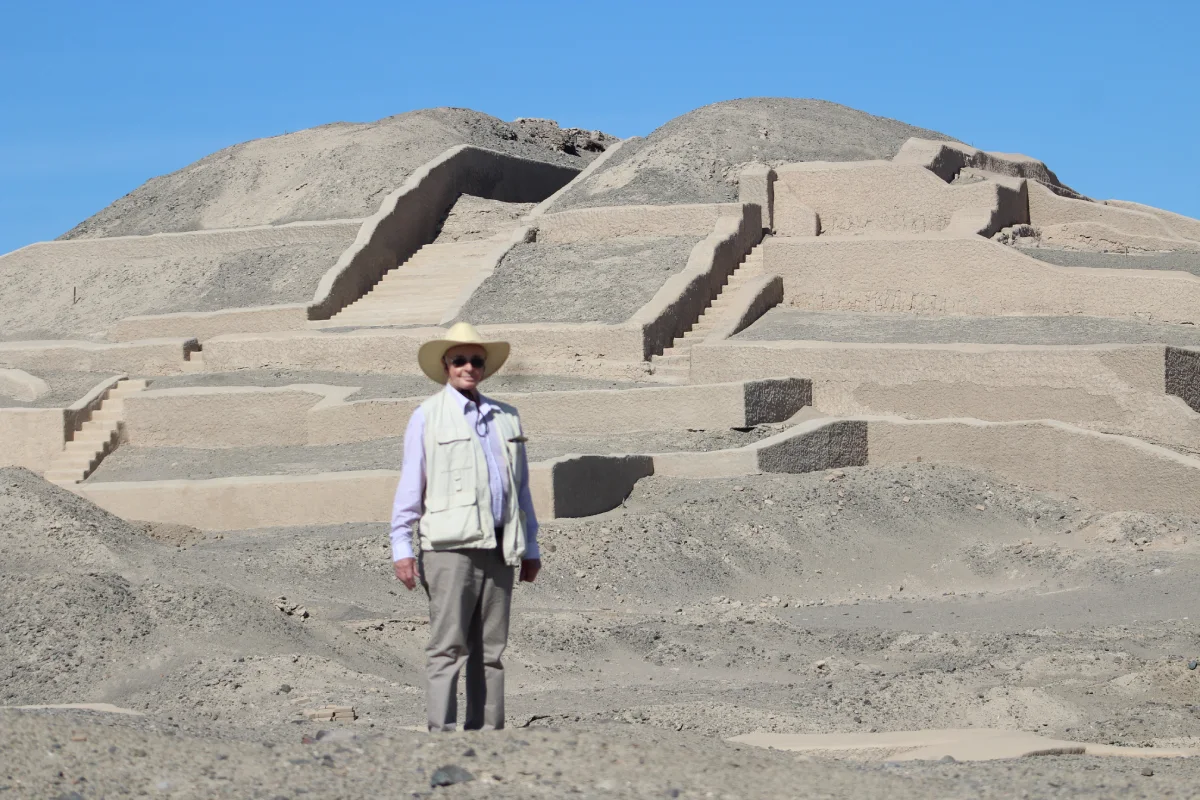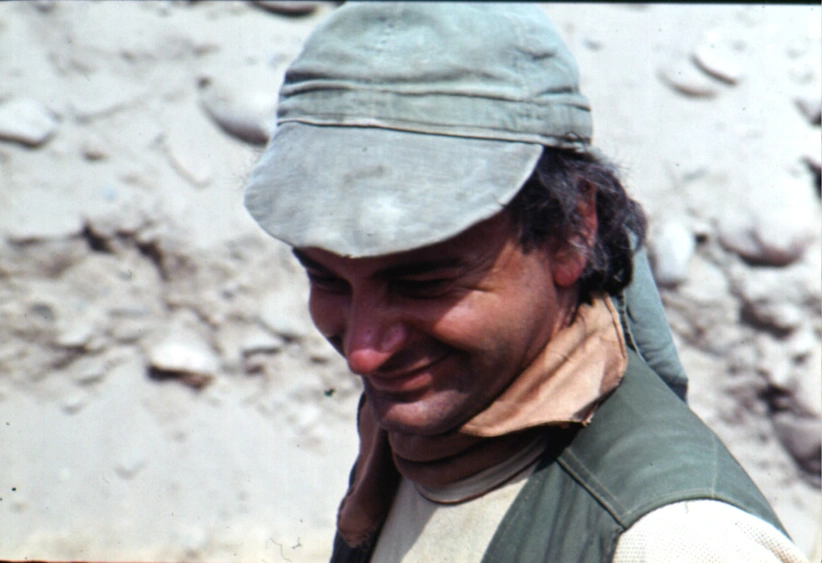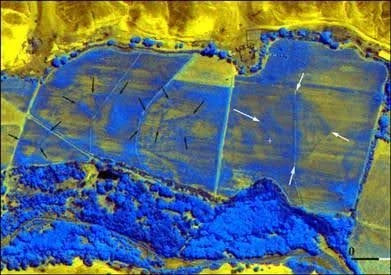Very close to the Lines, on the sacred plain near the Nasca Valley, among mud-brick pyramids and temples that withstand the passage of time, we find a place that connects us to the greatness of the ancient Nasca culture: Cahuachi.
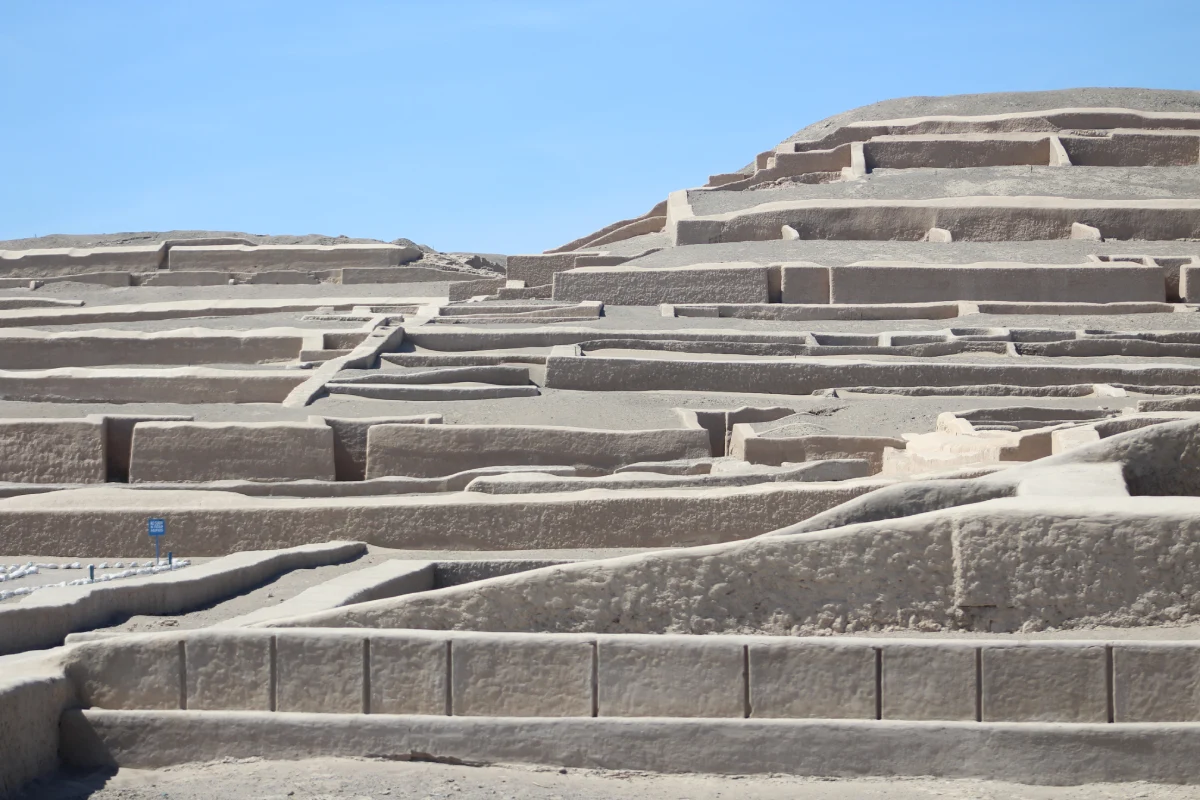
Ceremonial Center
Cahuachi was the main ceremonial center of the Nasca culture. It was not a city as we know them, but rather a sacred place where thousands gathered to present offerings, perform rituals, religious ceremonies, and collective celebrations. A space built of adobe in the middle of the desert, with temples, plazas, and pyramids that could bring entire communities together.
That was Cahuachi: the spiritual meeting point of a whole people. A place of unity and communion—both social and spiritual—where ties between communities were strengthened, beliefs were shared, and homage was paid to the gods of fertility, water, and earth. In such an arid desert as Nasca, spirituality was closely tied to survival.
The Largest Mud-Brick Ceremonial Center in the World
Covering more than 24 km², Cahuachi is considered the largest mud-brick ceremonial center on the planet. Its stepped pyramids and enclosures have withstood more than a thousand years and still preserve their magic. Every archaeological discovery at Cahuachi reveals more about Nasca life: artistically decorated ceramics, exquisite textiles, and offerings that reflect a well-defined worldview. Here lie the answers to how they thought, what they believed in, and how they organized their society.
Archaeological work, led for more than 40 years by Italian researcher Giuseppe Orefici and the CEAP, has brought to light fascinating discoveries, including:
- Pyramids and temples built of adobe.
- Painted ceramics representing myths, animals, and deities.
- Textiles crafted with great detail despite desert conditions.
- Ritual offerings, many related to fertility and water.
Each finding reinforces the idea that Cahuachi was a central place for keeping the Nasca culture alive.
Some researchers suggest that the Nasca Lines served as markers guiding pilgrims descending from the Andean highlands to make offerings and perform funerary ceremonies at Cahuachi. The geoglyphs may have been part of collective rituals to invoke water and fertility. In this sense, Cahuachi functioned as the spiritual core, while the Lines extended that connection into the desert.

The Center for Pre-Columbian Archaeological Studies
Today, much of what we know about Cahuachi is due to the ongoing work of the Centro de Estudios Arqueológicos Precolombinos (CEAP). Thanks to excavations, studies, and restoration efforts, this heritage remains alive and can be passed on to new generations.
The greatest challenge is conserving such a vast complex (around 24 km²) made of mud-brick, but with dedication and modern technology, its essence has been preserved.
Cahuachi is not just a relic of the past; it is a living heritage. It represents:
- The spiritual legacy of the Nasca.
- The organizational and creative capacity of an ancient culture.
- A symbol of identity for the region and for all of Peru.
Visiting Cahuachi is a way of connecting with history, the land, and a worldview that continues to inspire respect and admiration.
Do You Want to Visit Cahuachi?
If you ever travel to Nasca, including Cahuachi in your itinerary will make your experience unforgettable. It is located only 28 km from the city of Nasca. You can visit with the help of local guides who will show you around and share its history.
The Antonini Didactic Museum is the perfect complement to understanding what you will see at the archaeological site. It is not just about “seeing ruins”: it is about feeling the energy of a place that was sacred more than a thousand years ago and that continues to transmit its primal and telluric force.
To speak of the importance of Cahuachi is to speak of a place that transcends time. It is to understand how the Nasca, in the middle of the desert, built a space of unity, spirituality, and art that still moves us today. Cahuachi is not only part of the past; it is a reminder that cultural roots are essential to understanding who we are and where we are headed.
If you want to learn more about the Nasca legacy, check out our articles, visit the Antonini Didactic Museum website (www.museoantonini.org), and discover how this culture lives on in every discovery and every conservation effort.
